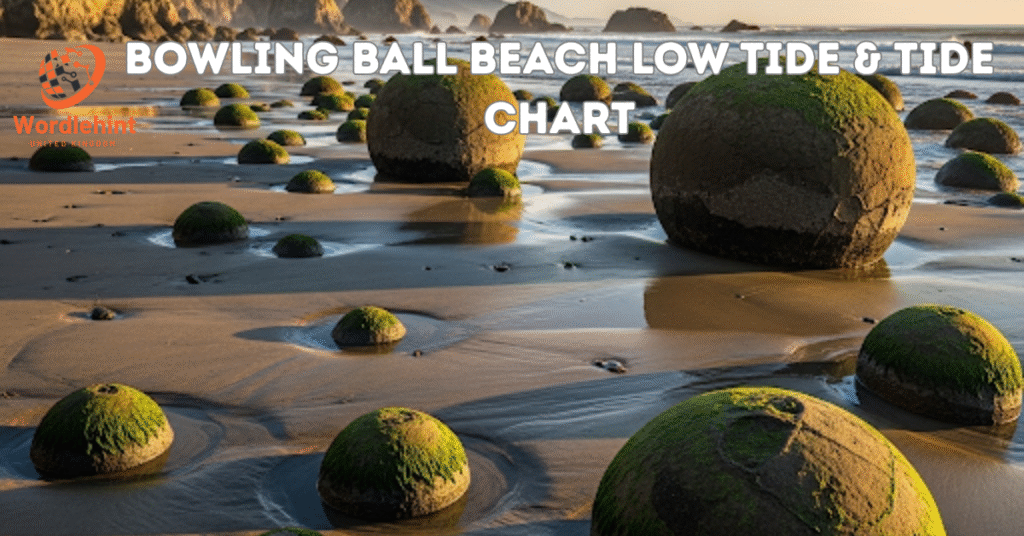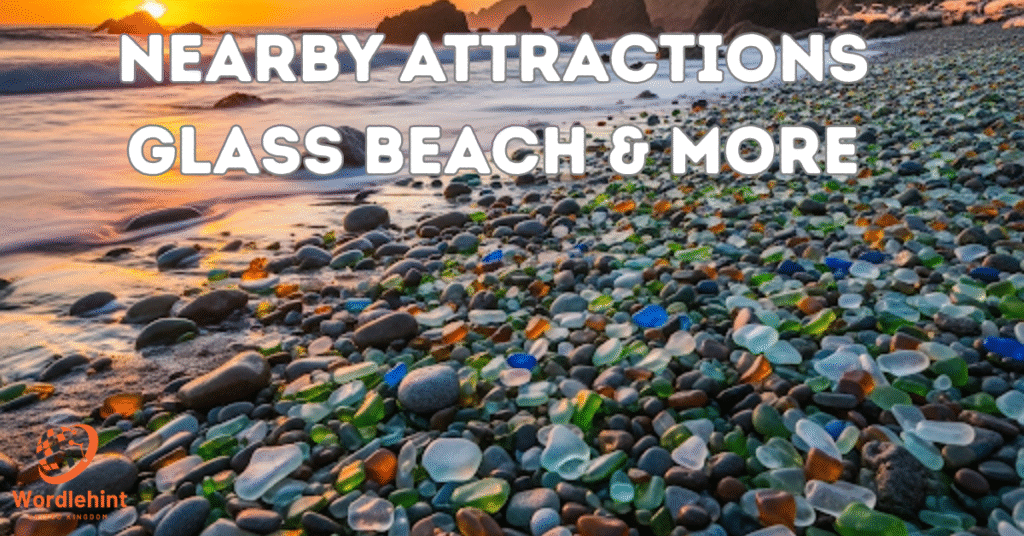Blog
How Old Is America? A Complete Guide to Its Real Age & History

How Old Is America in 2025?
The United States of America, often called simply “America,” was officially founded on July 4, 1776, with the adoption of the Declaration of Independence. How old is America?The answer is in 2025, America is 249 years old.
How old is america is calculated from the day the thirteen colonies declared independence from British rule. While the land itself has a history that stretches back thousands of years, the political entity known as the United States began in 1776.

The Origin of America From Land to Nation
Long before it was named the United States, the American continent was home to diverse Native American civilizations. Cultures such as the Mississippians, Ancestral Puebloans, and Iroquois had built sophisticated societies across the land.
In the 15th and 16th centuries, European explorers, including the Spanish, French, and English, began colonizing the region.
Over time, 13 British colonies were established along the East Coast, which would later come together to form an independent nation.
What Does “America” Mean?
While many use “America” to refer to the United States, it’s essential to clarify. America can also refer to the larger American continents,
It includes North and South America, home to ancient civilizations 1000 years old. In this article, “America” means the United States, founded on July 4, 1776.
When Did America Become a Country?
Although the Declaration of Independence was signed on July 4, 1776, it wasn’t until the end of the Revolutionary War in 1783 that the U.S. was officially recognized as a sovereign country by Britain through the Treaty of Paris.
Furthermore, the U.S. Constitution was ratified in 1788, providing the legal and structural foundation for the new country. So, while 1776 marks the symbolic beginning, it was years of struggle and development that shaped the nation.
What Was Before how old is America?
Before America was a country, the land was occupied by native tribes for thousands of years. These Indigenous peoples had their own governments, economies, and cultures.
The arrival of Europeans in the late 15th century led to colonization by various European powers, including Spain, France, and Britain. By the early 1700s, Britain controlled much of the eastern seaboard.
Life before how old is america, as we know it, was deeply rooted in Indigenous traditions, local trade networks, and colonial competition.
Who Discovered America and When?
The question of who discovered America is complex. While Christopher Columbus is often credited for discovering the New World in 1492, Leif Erikson, a Norse explorer, reached parts of North America around 1000 AD nearly 500 years earlier.
Additionally, Indigenous peoples lived on the land long before any Europeans arrived. So, in truth, America was “discovered” multiple times, depending on how discovery is defined.
How the United States Was Officially Born
The American Revolution (1775–1783) was the catalyst for the country’s official formation. The 13 colonies united against British rule and declared their independence in 1776. After years of war, they secured victory and recognition through the Treaty of Paris in 1783. The U.S.
Constitution was adopted in 1787 and ratified in 1788, with George Washington becoming the first president in 1789. These events marked the legal and political birth of the United States of America.
How old is AmericaThan Other Countries?
Compared to many other nations, America is relatively young. For instance, China, Egypt, and Greece have civilizations that date back thousands of years. Even modern nations like France (established in 843 AD) and the United Kingdom (formed in 1707) are older.
However, when compared to newer nations like Australia (1901) or countries formed post-World War II, the U.S. is considered older. So while America is not among the oldest nations, it has had significant global influence in a short span.
What Was the First State in America?
Delaware holds the title of the first state to join the Union. It ratified the U.S. Constitution on December 7, 1787, and proudly calls itself “The First State.”
Delaware was one of the original 13 colonies, all of which played critical roles in America’s foundation. These colonies formed the backbone of early U.S. political, cultural, and economic development.
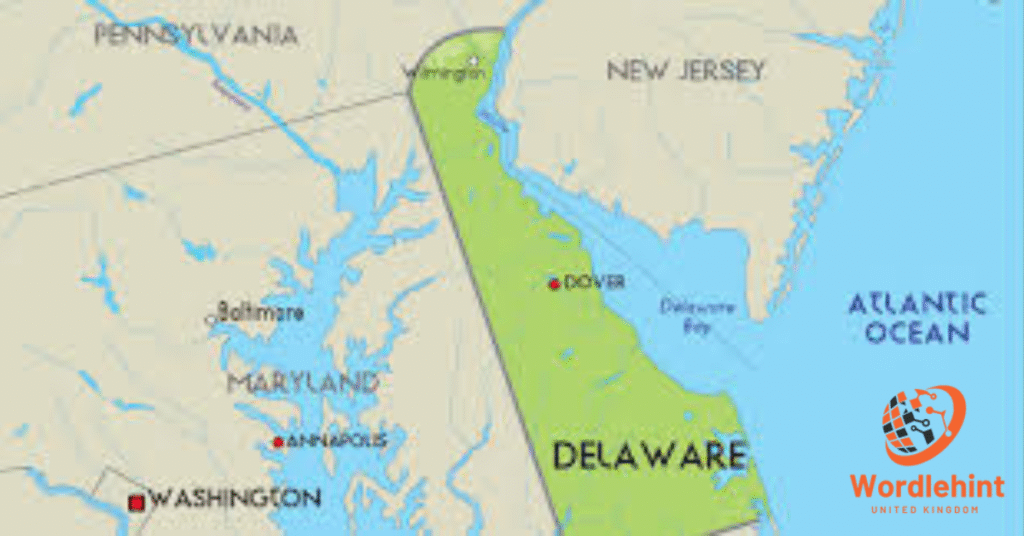
What Is the Oldest City in the U.S.?
The oldest continuously inhabited city in the United States is St. Augustine, Florida, founded by Spanish explorers in 1565.
That makes it older than Jamestown (1607) and Plymouth (1620). St. Augustine stands as a testament to early European presence in the Americas and has rich architectural and cultural heritage from its Spanish origins.
How Old Is the U.S. Flag?
The U.S. flag was first adopted on June 14, 1777, featuring 13 stars and 13 stripes to represent the original colonies.

Over time, the flag has been updated to include a star for each state, reaching its current 50-star design in 1960 after Hawaii joined the Union. So in 2025, the flag is 248 years old a powerful symbol of the country’s evolution and unity.
Is America 248 or 249 Years Old?

As of 2025, America is 249 years old. Confusion around the age often comes from how people count some include the starting year in the total, while others don’t. The country was born in 1776, so by subtracting that from 2025, the result is 249 years. The 250th birthday will be in 2026, a major milestone known as the U.S. Semiquincentennial.
How Old Is America in 2025 Compared to Other Countries?
The United States of America turns 249 years old on July 4th, 2025. While America is still a young country by global standards, it has made a major impact in just over two centuries.
But how old is America compared to other countries like France, China, India, Germany, and the United Kingdom? Let’s break it down country by country.
🇺🇸 United States
| Detail | Info |
|---|---|
| Country | United States |
| Year of Founding | July 4, 1776 |
| How old is America in 2025 | 249 years |
| How old is America in 2026 | 250 years |
| How old is America tomorrow | 1 day older |
| Age Difference with USA | — |
America gained independence on July 4, 1776, making July 4th, 2025 its 249th birthday. The U.S. will celebrate its 250th anniversary in 2026, a huge milestone in American history. The U.S. Army, on the other hand, was established even earlier on June 14, 1775 making it 250 years old in 2025.
🇫🇷 France
| Detail | Info |
|---|---|
| Country | France |
| Year of Founding | 843 (Treaty of Verdun) |
| Age in 2025 | 1,182 years |
| Age Difference with USA | +933 years |
France has existed as a political entity since 843 CE, making it over 1,100 years older than the United States. That’s a rich and ancient history of revolutions, monarchies, and republics. When compared to the U.S., France is practically ancient.
🇨🇳 China
| Detail | Info |
|---|---|
| Country | China |
| Year of Founding | 221 BCE (Qin Dynasty) |
| Age in 2025 | ~2,246 years |
| Age Difference with USA | +1,997 years |
China is one of the oldest civilizations in the world, dating back to the Qin Dynasty in 221 BCE. While modern China was officially established in 1949, Chinese civilization has over 2,000 years of history a stark contrast to America’s 249 years.
🇮🇳 India
| Detail | Info |
|---|---|
| Country | India |
| Year of Independence | August 15, 1947 |
| Age in 2025 | 78 years |
| Age Difference with USA | −171 years |
India gained independence from British rule in 1947, making it much younger than the U.S. But Indian civilization, like China’s, dates back thousands of years. Modern India may be 78 years old, but Indian culture and heritage are ancient.
🇩🇪 Germany
| Detail | Info |
|---|---|
| Country | Germany |
| Year of Unification | 1871 |
| Age in 2025 | 154 years |
| Age Difference with USA | −95 years |
Germany became a unified nation in 1871 under Otto von Bismarck. Before that, it was made up of many small kingdoms and states. Modern Germany is younger than the U.S., but German history, philosophy, and contributions go much deeper.
🇬🇧 United Kingdom
| Detail | Info |
|---|---|
| Country | United Kingdom |
| Year of Unification | 927 (England unified) |
| Age in 2025 | 1,098 years |
| Age Difference with USA | +849 years |
The UK traces its unification back to 927, when the Anglo-Saxon kingdoms of England united. Compared to the U.S., the UK is almost 850 years older. It’s also the country that once ruled over the American colonies before the U.S. gained independence.
How Old Is American Civilization?
While the United States as a country is 249 years old in 2025, American civilization goes further back. Native American cultures and societies have existed for thousands of years before European colonization. These rich indigenous histories are an essential part of what we now call “American civilization.”
When Was America Discovered?
America was “discovered” by Christopher Columbus in 1492, although Native Americans had already lived on the continent for millennia. European settlers began colonizing in the early 1600s, leading up to American independence in 1776.
How Old Is the U.S. Army?
The U.S. Army was established on June 14, 1775, even before the country itself declared independence. In 2025, the U.S. Army turns 250 years old, making it one of the oldest institutions in the country.
Conclusion
Understanding the age of America is more than just a math exercise it’s about knowing the story of a nation that rose from colonial roots to global power. In 2025, the United States is 249 years old, a country officially born in 1776 but rooted in centuries of Indigenous history and colonial expansion.
Knowing this helps us appreciate the journey of how a land became a country, how its identity formed, and why its milestones matter to the world.
Frequently Asked Questions (FAQs)
When did America become a country?
America became a country on July 4, 1776, with the Declaration of Independence.
How Old Is America in 2025?
The United States of America, often called simply “America,” was officially founded on July 4, 1776, with the adoption of the Declaration of Independence. That means in 2025, America is 249 years old. This age is calculated from the day the thirteen colonies declared independence from British rule.
What was before America?
Before America, the land was inhabited by Indigenous tribes and later colonized by European powers.
Who discovered America?
While Columbus reached the Caribbean in 1492, Leif Erikson arrived earlier, around 1000 AD. Indigenous peoples lived there long before.
Is America older than other countries?
No, many countries like China, France, and the UK are older than America.
What was the first state in America?
Delaware was the first state to ratify the U.S. Constitution in 1787.
What is the oldest city in the United States?
St. Augustine, Florida, founded in 1565, is the oldest continuously inhabited U.S. city.
How old is the U.S. flag?
The flag is 248 years old in 2025, originally adopted in 1777.
Is the U.S. 249 or 248 years old?
It is 249 years old in 2025. The 250th anniversary will be in 2026.
What will happen on America’s 250th birthday?
Big celebrations are expected nationwide in 2026 to mark 250 years since independence, including parades, exhibitions, and cultural events.
When did America become a country?
America became a country on July 4, 1776, when the 13 colonies gained freedom from Great Britain.
What was before America?
Before 1776, the land was inhabited for 1000 years by Native American civilizations. It was later found by various European powers, the British, Spanish, Dutch, and French.
Who discovered America?
Christopher Columbus is remembered in Western history for arriving in the Americas in 1492. Indigenous peoples lived here long before. Leif Erikson, a Norse explorer, likely reached North America centuries earlier.
Is America older than other countries?
In global terms, America is relatively young. Countries like China, Egypt, Greece, and Iran have histories dating back 1000 years. America ranks as a young nation politically, even though the land itself is ancient.
What was the first state in America?
Delaware was the first state to ratify the U.S. Constitution, earning its nickname: “The First State”. It ratified the Constitution on December 7, 1787.
What is the oldest city in the United States?
St. Augustine, Florida, was founded in 1565 by Spanish explorers. The oldest continuously inhabited European-established settlement in the U.S.
How old is the U.S. flag?
The original Stars and Stripes design was adopted on June 14, 1777, making the U.S. flag 248 years old in 2025. Flag Day is celebrated annually on June 14.
Is the U.S. 249 or 248 years old?
In 2025, the United States will turn 249 years old on July 4. Some confusion arises. When counting from different events, but 1776 is the official founding year.
What will happen on America’s 250th birthday?
America’s Semiquincentennial (250th birthday) will occur in 2026. It became a major national celebration, featuring parades, memorials, and educational events. Events are being planned across all 50 states to honor the milestone.
Blog
The Traveler Hired the Wrong Tour Guide – A Costly Mistake

The Importance of a Good Tour Guide
A good tour guide can make or break your travel experience. More than just a person who shows you around, a reliable guide is a storyteller, a cultural ambassador, and a safety net.
Whether you’re exploring a bustling city or a remote destination, the right guide brings hidden gems to light and ensures your experience is smooth, informative, and enjoyable.
Role in cultural insight, safety, and local experience:
- Offers authentic knowledge and cultural context
- Helps you avoid tourist traps and unsafe areas
- Bridges language gaps and handles logistics
- Creates a deeper connection with the destination
Early Warning Signs You’ve Hired the Wrong Guide
Lack of Local Knowledge
If your guide seems unsure about routes, attractions, or local customs, that’s a major red flag. A professional guide should be well-versed in the destination’s history, culture, and geography.
Poor Communication or Language Barriers
Misunderstandings can quickly ruin a trip. If your guide struggles to communicate clearly or doesn’t speak your language well enough, frustration and confusion will follow.
Unprofessional Behavior or Appearance
Being consistently late, dressed inappropriately, or behaving disrespectfully is unacceptable. Tour guides should be reliable, respectful, and professionally presentable.

Deviating from the Promised Itinerary
If your guide keeps making unexplained changes to the schedule or skips key stops without reason, it’s a sign of poor planning or dishonesty.
Negative or Fake Online Reviews
Before hiring, always check reviews. A pattern of negative feedback or obviously fake 5-star reviews are strong indicators to stay away.
Real Travel Story – When Jake Hired the Wrong Guide

Planning a dream trip gone wrong: Jake booked a trip to Morocco through a third-party travel website. His guide claimed to be a local expert, but red flags quickly emerged.
Early red flags and ignored instincts: The guide arrived late, had limited knowledge of historical sites, and spoke broken English despite promises of fluency.
Safety scares and wasted money: Jake was taken to questionable neighborhoods and charged extra for “special access” to places that were actually free to enter.
Emotional impact of a bad guide: Jake returned home disappointed and stressed. What was supposed to be a cultural adventure became a frustrating ordeal.
Financial and Safety Consequences
Hidden Fees and Poor Budgeting
Bad guides often suggest overpriced shops or demand unexpected tips. This disrupts your budget and adds stress.
Unsafe Areas and Missed Experiences
You may be taken to unsafe neighborhoods or miss iconic sites simply because the guide didn’t plan well or wanted to cut corners.
Lost Time at Tourist Traps
Instead of exploring authentic attractions, you might spend hours at commercialized spots where the guide earns a commission.
Trust Issues and Emotional Burnout
Repeated disappointments drain your enthusiasm. Feeling unsafe or cheated leaves a lasting emotional toll.
What to Do If You’ve Hired the Wrong Tour Guide

Speak Up – How to Address Concerns Politely
Voice your concerns calmly but clearly. Example: “I noticed we’re not following the itinerary. Could we please stick to the original plan?”
When and How to Request a Refund or Change
If the service is unacceptable, don’t hesitate to ask for a partial refund or a different guide. Use booking platforms for dispute resolution if necessary.
Safety First – Know When to Leave
If you feel unsafe, remove yourself from the situation. Return to your hotel or contact local authorities if needed.
Document Everything Photos, Notes, Recordings
Keep a record of interactions, places visited, and issues encountered. This is useful for complaints or refund requests.
Turn to Your Hotel or Booking Platform for Help
Hotels often have trusted local contacts. If you booked through an agency, notify them immediately and request support.
How to Research and Vet Tour Guides Properly
Read Reviews What to Look For
Look for consistent positive reviews on trusted platforms like TripAdvisor or Viator. Watch out for repetitive language in fake reviews.
Verify Credentials and Licenses
Ask for a copy of their license or guide ID. Many countries require tour guides to be certified.
Ask Pre-Booking Interview Questions
Questions like “What are your favorite hidden spots here?” or “Can I see a sample itinerary?” help gauge knowledge and attitude.
Use Trusted Platforms and Local Tourism Boards
Book through reputable sites or ask local tourism boards for certified guides.
Red Flags You Should Never Ignore
Low prices, no website or portfolio, vague answers, and pressure to book fast are warning signs.
Smart Tools to Help You Stay in Control While Traveling
Use eSIMs for Europe (Unlimited Max & Lite Plans)
Stay connected without roaming charges. eSIMs offer instant data access to search reviews, maps, and contact support.
Travel Apps for Self-Guided Tours
Apps like Rick Steves Audio Europe, GPSmyCity, and Google Maps offer offline tours and local tips.
Emergency Contact & Translation Apps
Keep apps like Google Translate and local emergency numbers handy for tough situations.
Lessons Learned – How to Turn a Bad Trip into a Positive One
Build Resilience and Flexibility
Bad experiences can teach you to adapt and think on your feet skills every traveler needs.
Learn to Trust Your Instincts
If something feels off, it probably is. Listen to your gut before committing.
Share Your Experience to Help Others
Post honest reviews and share your story to protect future travelers.
Leave Constructive Reviews (with Examples)
Explain what went wrong and how it could be improved. Keep it factual and respectful.
How to Find the Right Tour Guide Next Time
- Use trusted local agencies or referrals
- Ask specific questions before booking
- Compare multiple options
- Book in advance during peak season
- Always have a Plan B
FAQs
What are the signs I’ve hired the wrong tour guide?
Poor knowledge, bad communication, unprofessional behavior, and frequent itinerary changes.
Can I ask for a refund if the guide was bad?
Yes, especially if you booked through a platform or agency. Document your issues.
How do I check if a guide is licensed?
Ask to see their certification or check with local tourism boards.
What’s the safest way to book a guide?
Through verified agencies, apps, or hotel referrals.
Should I avoid cheap tours?
Not always, but if a deal seems too good to be true, research thoroughly.
How can I safely leave a tour I’m unhappy with?
Stay calm, communicate, and remove yourself safely. Alert your hotel or local support.
What tools help in a self-guided tour?
Audio guide apps, offline maps, and travel blogs.
What rights do I have as a traveler?
You can file complaints, request refunds, and contact local tourism authorities.
How can I write a helpful review after a bad guide?
Focus on facts. Mention what went wrong and how it impacted your experience.
Is it okay to travel without a guide?
Yes! Many travelers enjoy self-guided experiences using modern tools and apps.
Conclusion
A great guide adds depth, safety, and joy to your journey. With proper research and preparation, you can ensure your travel memories are positive.
A better trip begins with better prep.
Blog
Best Thailand Family Holiday Guide 2025 for First-Time Travelers

Why Thailand is the Best Family-Friendly Destination
Thailand captivates families with its vibrant mix of culture, adventure, and affordability. From bustling Bangkok to serene beaches, it offers something for every age. Friendly locals and safe, kid-friendly attractions make it welcoming for first-timers.
Explore ancient temples, lush jungles, or relaxing shores. Affordable accommodations and food suit tight budgets, while diverse activities keep everyone entertained.
Whether it’s elephant encounters or waterpark thrills, Thailand family holidays ensures fun for kids and relaxation for parents.The country’s infrastructure supports family travel, with English widely spoken in tourist areas.
Clean public transport and family-oriented tours simplify exploration. Thailand’s warm hospitality and endless discoveries create unforgettable memories.
Planning Your Thailand Trip: A Step-by-Step Guide
Organizing a family trip to Thailand requires simple steps to ensure a smooth adventure. Start early to secure deals and prepare for a hassle-free experience.
Essential Travel Documents
Check that all family passports are valid for six months beyond your travel dates. Depending on your country, Thailand offers visa-free entry or visas on arrival for many nationalities. Research requirements early and carry printed copies of bookings and IDs.
Vaccinations and Health Tips
Consult your doctor 4–6 weeks before departure for vaccinations like Hepatitis A, Typhoid, and routine shots (MMR, DTP). Pack a small first-aid kit with kids’ medications. Use bottled water and hand sanitizers to stay healthy.
What to Pack for Kids and Parents
Pack lightweight clothing, sunscreen, and mosquito repellent for Thailand’s tropical climate. Include kids’ favorite snacks, travel games, and coloring books for long journeys. Don’t forget swimwear and hats for beach days.

Planning Your Thailand Trip
Thailand at a Glance: Must-Know Facts
Thailand Family Holidays offers families a vibrant, accessible destination. Knowing key details helps you navigate with ease and enjoy your trip fully.
- Capital: Bangkok
- Currency: Thai Baht (THB)
- Language: Thai (English common in tourist spots)
- Time Zone: GMT+7
- Emergency Number: 1155 (Tourist Police)
These facts ensure you’re prepared for communication, payments, and emergencies. Thailand’s tourist-friendly environment makes it easy to connect with locals and explore confidently.

Best Time to Visit Thailand With Kids
Choosing the right time for your Thailand family trip maximizes fun and comfort. Each season offers unique experiences tailored to different preferences.
Cool, Dry Season (Nov–Feb)
This season’s mild weather (20–30°C) is perfect for families. Beaches shine, and festivals like Loy Krathong captivate kids. Book early as it’s peak season with higher prices and crowds.
Hot Season (Mar–May)
Temperatures soar (30–40°C), so plan early morning or evening outings. Stay hydrated and visit indoor attractions like museums or malls. Fewer crowds mean better deals on accommodations.
Rainy Season (Jun–Oct)
Short showers don’t dampen fun. Lower costs and quieter attractions make this ideal for budget travelers. Indoor activities like cooking classes or aquariums keep kids engaged.
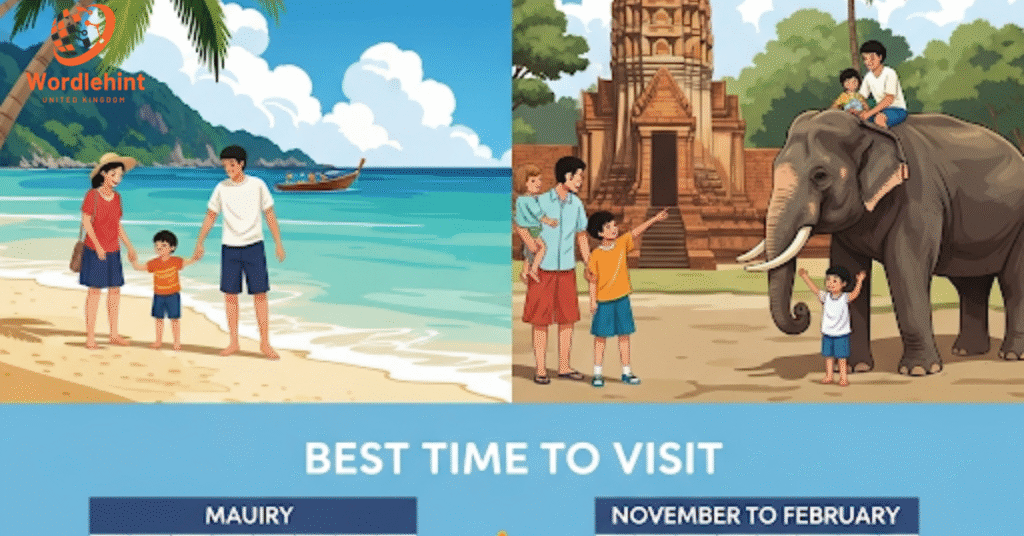
Family Safety Tips While in Thailand
Safety ensures a worry-free Thailand adventure. Simple precautions keep your family secure while enjoying the country’s charm.
Stick to freshly cooked food and bottled water to avoid tummy troubles. Pack familiar snacks for picky eaters. Comprehensive travel insurance covers unexpected medical or trip issues.
Always supervise kids in crowded markets or tourist spots. Thailand’s locals are warm, but stay vigilant. The Tourist Police (1155) are reliable for emergencies and speak English.
Teach kids basic safety rules, like staying close in busy areas. Carry a hotel card with contact details in case anyone gets lost. These steps ensure a stress-free trip.
How to Travel Thailand With Kids: Flights & Transport
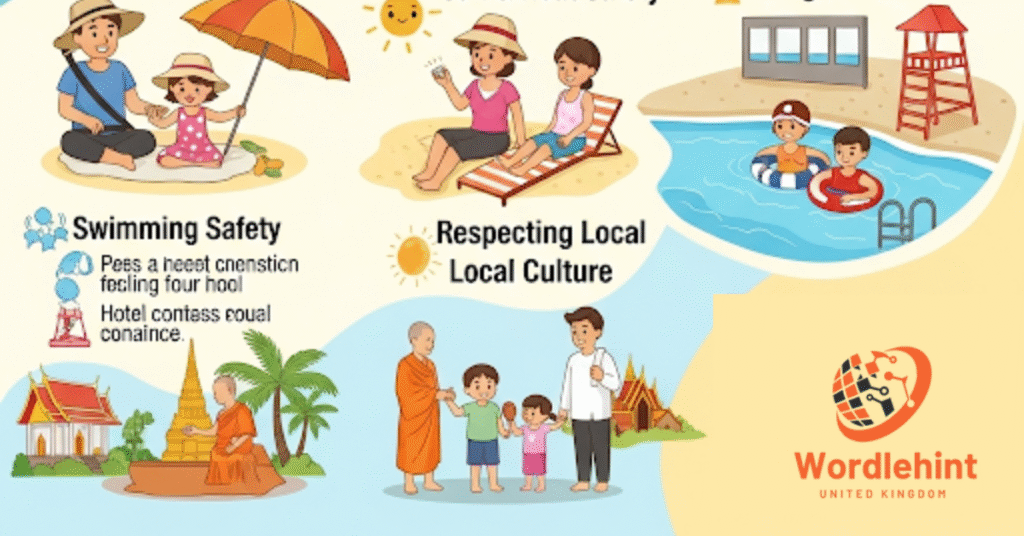
Getting to and around Thailand is straightforward with family-friendly options. Plan transport to keep kids comfortable and stress low.
Booking Flights from Major Countries
Book flights 3–4 months in advance for deals from the US, UK, or Australia. Major airlines like Thai Airways or Emirates offer direct routes to Bangkok. Look for family discounts or extra baggage allowances.
Airport Arrival Tips
Suvarnabhumi Airport (BKK) is modern and family-friendly. Use priority family lanes at immigration and have documents ready. Stick to official taxi counters or pre-booked transfers for safety.
Bangkok Airport Transfers
Choose metered taxis, Grab rides, or airport shuttles for easy transfers. Pre-arrange private vans for larger families. All options are safe and affordable, ensuring a smooth start.
Budgeting & Money Tips for Families
Managing money in Thailand is simple with a bit of planning. Families can stretch their budget while enjoying all the country offer.
Local Currency & Exchange
The Thai Baht (THB) is king. Exchange small amounts at airports, then use local banks or authorized counters for better rates. Carry cash for markets and small vendors.
Using ATMs & Cards
ATMs are plentiful in cities and tourist areas. Use cards with no foreign transaction fees for convenience. Inform your bank of travel plans to avoid card blocks.
Getting Around Thailand with Children
Thailand’s transport options suit families, balancing adventure and comfort. Choose based on your itinerary and kids’ needs.
Trains offer scenic, budget-friendly travel, ideal for older kids who enjoy the journey. Tuk-tuks provide fun, short rides—always negotiate fares first. Bangkok’s BTS Skytrain is fast, clean, and great for city exploration with kids.
Private vans or hired cars are perfect for families, offering flexibility and space. Book through reputable agencies for safety. These options make navigating Thailand’s cities and islands a breeze.
Best Places to Visit in Thailand with Family

Thailand’s diverse destinations cater to kids and parents alike. These spots blend fun, culture, and relaxation for all ages.
Bangkok: Culture Meets Entertainment
Explore the Grand Palace, kid-friendly Sea Life Aquarium, or Lumpini Park. River cruises offer scenic, relaxing sightseeing. Malls like Siam Paragon have play zones and food courts.
Chiang Mai: Nature & Adventure
Visit ethical elephant sanctuaries, try zip-lining, or shop at night markets. Cooking classes engage kids, while temples offer cultural insights. Chiang Mai’s cool vibe suits families.
Phuket: Beach Bliss & Waterparks
Phuket’s Patong Beach and waterparks like Splash Jungle thrill kids. Family resorts offer pools and activities. Teens love water sports, while toddlers enjoy safe shores.
Koh Samui: All-in-One Island
Koh Samui boasts family resorts, nature trails, and calm beaches. Visit waterfall hikes or enjoy beachside dining. It’s easy to navigate and perfect for all ages.
Koh Lanta: Slow Travel & Tranquility
Koh Lanta’s quiet beaches and low-key vibe suit families seeking calm. Snorkeling and small resorts keep everyone happy. It’s less crowded than other islands.
Khao Sok National Park: Jungle Adventures
Stay in unique treehouses and enjoy canoe tours or guided jungle safaris. Khao Sok’s wildlife and scenery captivate kids and parents seeking nature-filled adventures.
Shopping With Kids in Thailand
Shopping in Thailand is a family adventure. Bangkok’s malls, like MBK, offer kid zones, arcades, and global food chains for easy meals. Night markets in Chiang Mai or Phuket sell souvenirs, toys, and local snacks kids love. Bargain politely and stick to marked stalls to avoid scams. These vibrant spots blend fun and culture, keeping everyone entertained.
How to Interact with Locals: Thai Etiquette for Families
Respecting Thai customs strengthens connections. Teach kids the “wai” greeting a slight bow with palms together to show respect. Dress modestly at temples, covering shoulders and knees. Always smile and stay polite, even in busy markets. Avoid overly pushy vendors and stick to reputable stalls for safe purchases. These habits ensure warm interactions.
Language Tips: Basic Thai Phrases to Know
Learning a few Thai phrases delights locals and helps navigation. Say “Sawasdee” for hello, “Khob Khun” for thank you, and “Chai/Mai” for yes/no. In emergencies, use “Chuay Duay!” for help. Practice these with kids for fun and confidence while exploring Thailand.
FAQs
Is Thailand safe for family travel?
Yes, Thailand is safe with precautions. Stick to tourist areas, supervise kids, and use bottled water. Tourist Police (1155) assist foreigners.
What are the best family resorts in Thailand?
Top picks include Centara in Phuket, Anantara in Koh Samui, and Four Seasons in Chiang Mai for kid-friendly amenities.
When is the cheapest time to visit Thailand?
The rainy season (Jun–Oct) offers lower prices on flights and hotels, with fewer crowds.
Are Thai street foods safe for kids?
Freshly cooked street food from busy stalls is generally safe. Avoid raw items and ensure kids eat familiar snacks if needed.
Do I need a visa for Thailand with kids?
Many nationalities get visa-free entry or visas on arrival. Check requirements based on your country.
What’s the best island in Thailand Family holidays?
Koh Samui and Phuket offer family resorts, safe beaches, and activities for all ages.
How do I keep kids entertained on long flights to Thailand?
Pack games, tablets with movies, snacks, and comfort items like blankets or stuffed toys.
Can I drink tap water in Thailand?
No, stick to bottled water to avoid health issues, especially for kids.
How much money do I need for a 7-day family trip to Thailand?
Budget $1,000–$2,000 for a family of four, depending on accommodation and activities.
What are emergency numbers for tourists in Thailand?
Call 1155 for Tourist Police or 1669 for medical emergencies.
Conclusion
Thailand Family Holidays welcomes families with affordable adventures, rich culture, and stunning nature. From Bangkok’s vibrant streets to Koh Samui’s tranquil beaches, it’s a perfect first-time international destination.
With proper planning passports, vaccinations, and smart packing your trip will be seamless. Embrace Thai hospitality, try local foods cautiously, and explore with confidence. This guide equips you for a memorable Thailand family holidays filled with joy and discovery.
Blog
1. Introduction to Bowling Ball Beach, California
-

 Blog4 weeks ago
Blog4 weeks agoKing Charles Sustainable Travel Initiatives A Green Royal Vision
-

 Blog3 months ago
Blog3 months agoLuxury Villas in Italy Le Collectionist Live the Italian Dream
-

 Blog2 months ago
Blog2 months agoLuxury Villas Greece Le Collectionist – Inside Their Exclusive Collection (2025)
-

 Blog3 months ago
Blog3 months agoWho Was Anna Zauner from Simi Valley?
-

 Blog1 month ago
Blog1 month agoLuxury Villas Provence Le Collectionist – Ultimate Guide 2025
-

 Blog2 months ago
Blog2 months agoSelena Green Vargas Biography, Fame & Disappearance
-

 Blog1 month ago
Blog1 month agoLuxury Villas Ibiza Le Collectionist Top Private Retreats for 2025
-

 Tech3 weeks ago
Tech3 weeks agoIn-Depth Apple Vision Pro Real-World Reviews and Experiences



